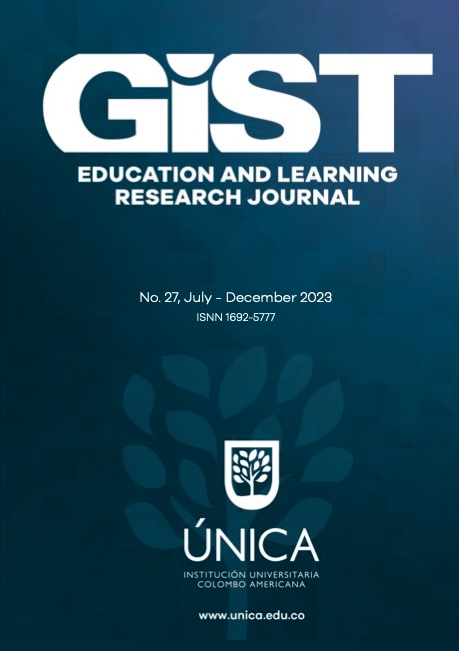Syntax of DP Deletion and Pragmatics of DP Movement in Passive Voice
DOI:
https://doi.org/10.26817/16925777.1801Keywords:
applied linguistics methodology, passive voice, pragmatics of DP movement, syntax of DP deletionAbstract
This study examines the syntax of DP deletion and pragmatics of DP movement in passive voice from applied linguistics methodology. The data collection was a purposive sampling method as the study specifically alternated the data from Q1 SCOPUS publications, Thai national publications (TCI 1), and Thai undergraduate students’ independent studies (IS) from a private university. There were 99 tokens. The data analyses were linguistics and inferential statistics. Linguistic analysis follows generative grammar, whereas the statistical analysis follows inferential statistical analysis SPSS29. The results of the study showed the similarities of DP by-phrase agent deletion between Q1 SCOPUS, TCI 1, and IS. However, the results in these publications were different pragmatically. The discussion was explained syntactically and pragmatically. The DP arguments in passive voice were omitted due to the reason of widely-known agents. Pragmatically, the movement of DP argument in Q1 SCOPUS and TCI 1 complies with the theory of pragmatic discourse of givenness, while this was not applied in IS. It is expected that the results in this study would be useful for English learners in how to apply passive voice to write research methodology appropriately.
Downloads
References
Andrews, E. (1990). Markedness theory. Duke University Press. https://doi.org/10.1215/9780822382881
Almahameed, Y. S., Bataineh, K. B. A., & Ammari, R. M. G. (2022). The use of passive voice in news reports for political purposes. Journal of Language Teaching and Research, 13(6), 1196-1202. https://doi.org/10.17507/jltr.1306.07
Amdur, R. J., Kirwan, J., & Morris, C. G. (2010). Use of the passive voice in medical journal articles. AMWA Journal: American Medical Writers Association Journal, 25(3), 96-106.
Bošković, Ž. (2002). A-movement and the EPP. Syntax, 5(3), 167-218. https://doi.org/10.1111/1467-9612.00051
Bunmak, N. (2023). The effectiveness of mother tongue-based language teaching in facilitating English language skills for Thai university undergraduates and their perceptions on L1 use in English classrooms. NIDA Journal of Language and Communication, 28(44), 1-20.
Chomsky, N. (1965). Aspects of the theory of syntax. MIT Press. https://doi.org/10.21236/AD0616323
Djuwari, D., Saputri, T., & Authar, N. (2022). Passive voice in the methodology sections of research journal articles. Journal of Positive School Psychology, 6(8), 6116-6128.
McEnery, T., & Hardie, A. (2011). Corpus linguistics: Method, theory and practice. Cambridge University Press. https://doi.org/10.1017/CBO9780511981395
Hirosawa, E., Kono, Y., & Oga-Baldwin, W. Q. (2024). The structure of ability beliefs in EFL classrooms: A cross-theoretical analysis bridging self-efficacy and perceived competence needs satisfaction. System, 124, 103383. https://doi.org/10.1016/j.system.2024.103383
Iraheta, A. C. (2024). Learning with a purpose: Acquisition of compliments and compliment responses by beginning learners of Spanish in synchronous online exchanges. System, 123, 103291. https://doi.org/10.1016/j.system.2024.103291
Kim, A., & Su, Y. (2024). How implementing an AI chatbot impacts Korean as a foreign language learners’ willingness to communicate in Korean. System, 122, 103256. https://doi.org/10.1016/j.system.2024.103256
Matthey, S. (1998). p< .05—but is it clinically significant? Practical examples for clinicians. Behaviour Change, 15(2), 140-146. https://doi.org/10.1017/S081343900003247
Mu, Y., Lee, S., & Choe, H. (2023). Factors influencing English as a lingua franca communication: A case of an international university in China. System, 116, 103075. https://doi.org/10.1016/j.system.2023.103075
Pupipat, A., Rungkaew, T., & Meeparp, L. (2022). Judging a book by its back cover: Spoken/informal register as found in happily-ever-after women’s novel blurbs. Journal of Studies in the English Language, 17(2), 1–31. https://doi.org/10.14456/jsel.2022.4
Radford, A. (2009). An introduction to English sentence structure. Cambridge University Press. https://doi.org/10.1017/CBO9780511800924
Sinclair, J. (1996). The search for units of meaning. Textus, 9(1), 75-106.
Smolka, V. (2011). The end-weight and end-focus principles in rhematic subjects. Theories and Practices, 7(1), 79.
Smolka, V. (2017). What comes first, what comes next: Information packaging in written and spoken language. Acta Universitatis Carolinae Philologica, 1(1), 51-61. https://doi.org/10.14712/24646830.2017.4
Suebklin, N., & Vungthong, S. (2022). Representation of rape victims and perpetrators in Thai news articles and its implications for rape myths. Journal of Studies in the English Language, 17(2), 32–55. https://doi.org/10.14456/jsel.2022.5
Svenonius, P. (2002). Subjects, expletives, and the EPP. Oxford University Press.
Swan, M. (2015). Practical English usage. Oxford University Press. https://doi.org/10.1093/oso/9780195142242.001.0001
Teravainen-Goff, A. (2023). Intensity and perceived quality of L2 engagement: Developing a questionnaire and exploring engagement of secondary school language learners in England. System, 112, 102955. https://doi.org/10.1016/j.system.2022.102955
Traugott, E. C. (2010). Intersubjectivity and intersubjectification: A reassessment. In Kristin
Davidse, Lieven Vandelanotte & Hubert Cuyken (eds.) Subjectification, intersubjectification and grammaticalization (pp. 29-73). De Gruyter Mouton.
Ruan, Y., & Saito, K. (2023). Less precise auditory processing limits instructed L2 speech learning: Communicative focus on phonetic form revisited. System, 114, 103020. https://doi.org/10.1016/j.system.2023.103020
Uchida, S. (2024). Using early LLMs for corpus linguistics: Examining ChatGPT's potential and limitations. Applied Corpus Linguistics, 4(1), 100089 https://doi.org/10.1016/j.acorp.2024.100089
Widdowson, M. (2011). Case study research methodology. International Journal of Transactional Analysis Research & Practice, 2(1), 25-34. https://doi.org/10.29044/v2i1p25
Wongkittiporn, A. (2024). A quantitative study on noun clauses in applied linguistics research articles between Q1 SCOPUS and TCI 1 Databases. Parichart Journal, 37(2), 502-515. https://doi.org/10.55164/pactj.v37i2.269095
Downloads
Published
How to Cite
Issue
Section
License
Copyright (c) 2024 GIST – Education and Learning Research Journal

This work is licensed under a Creative Commons Attribution-NonCommercial-NoDerivatives 4.0 International License.
| Article metrics | |
|---|---|
| Abstract views | |
| Galley vies | |
| PDF Views | |
| HTML views | |
| Other views | |








